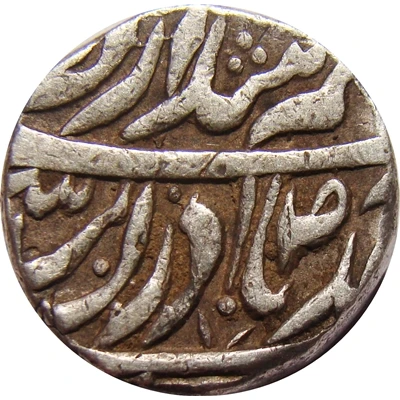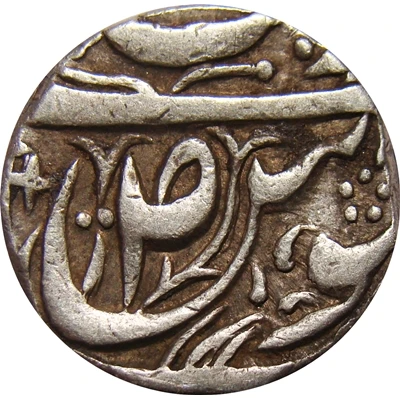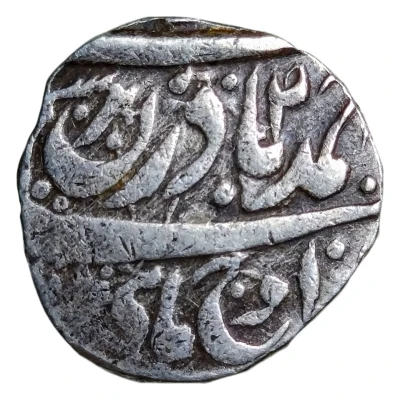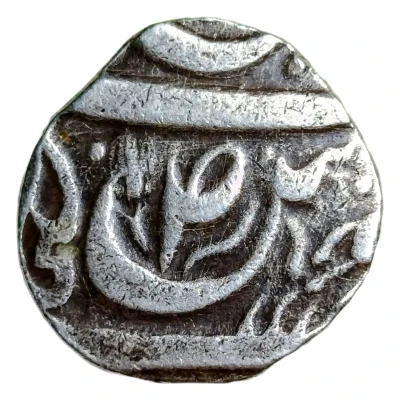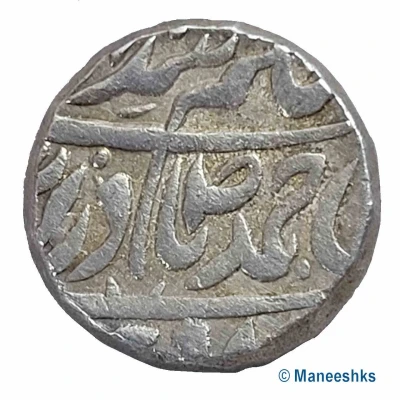
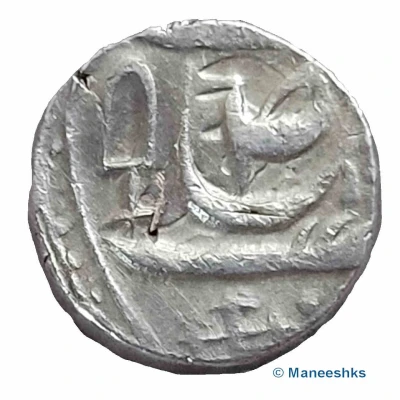

© Maneeshks (CC BY-NC)
1 Rupee - Narinder Singh
1902 (1846) year| Silver | 11.04 g | 18.50 mm |
| Issuer | Princely state of Patiala (Indian princely states) |
|---|---|
| Type | Standard circulation coin |
| Year | 1902 (1846) |
| Calendar | Vikram Samvat |
| Value | 1 Rupee |
| Currency | Rupee |
| Composition | Silver |
| Weight | 11.04 g |
| Diameter | 18.50 mm |
| Thickness | 4.65 mm |
| Shape | Round (Weight and dia may vary) |
| Technique | Hammered |
| Orientation | Medal alignment ↑↑ |
| Demonetized | Yes |
| Updated | 2024-10-05 |
| Numista | N#367957 |
|---|---|
| Rarity index | 97% |
Reverse
Identifying marks
Edge
Plain
Comment
Mint: Sirhind (or Sahrind)Identifying marks on coins of Narinder Singh
Narinder Singh KCSI (26 November 1824 – 13 November 1862) was Maharaja of the princely state of Patiala from 1845 to 1862. He was one of the first local rulers to receive the Order of the Star of India and was a Member of the Indian Legislative Council during Lord Canning's Viceroyalty.
Ahmad Shāh Durrānī (Pashto: احمد شاه دراني; Dari: احمد شاه درانی), also known as Ahmad Shāh Abdālī (احمد شاه ابدالي), was the founder of the Durrani Empire and is regarded as the founder of the modern Afghanistan. In July 1747, Ahmad Shah was appointed as King of the Afghans by a loya jirga in Kandahar, where he set up his capital. Primarily with the support of the Pashtun tribes, Ahmad Shah pushed east towards the Mughal and Maratha Empires of India, west towards the disintegrating Afsharid Empire of Iran, and north towards the Khanate of Bukhara of Turkestan. Within a few years, he extended his control from Khorasan in the west to North India in the east, and from the Amu Darya in the north to the Arabian Sea in the south.
Interesting fact
The 1 Rupee coin from the Princely state of Patiala, issued in 1902 during the reign of Maharaja Narinder Singh, features a unique design element - a small crescent moon and a five-pointed star, which are symbols of Islam and Hinduism respectively, signifying the religious harmony and diversity of the region.
